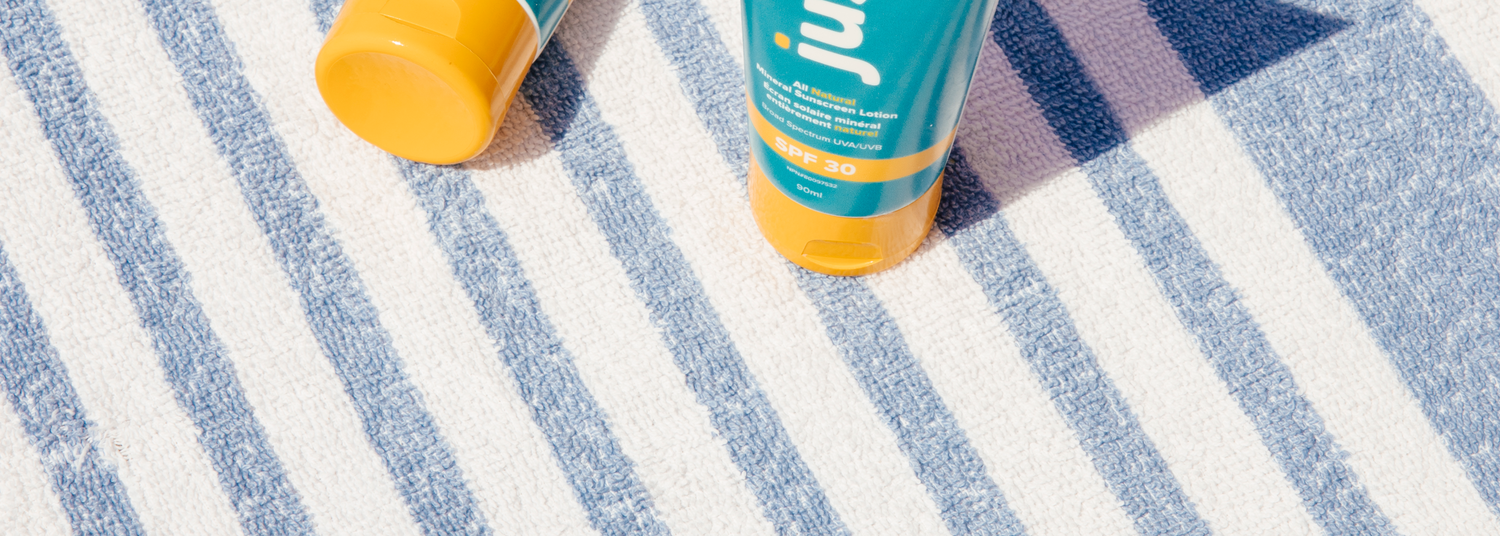5 Reasons you need to wear sunscreen every day.

Did you know dermatologists recommended we wear a 30 SPF sunscreen every day? The sun's ultraviolet rays are damaging in more ways than we may realize.
Here are five reasons to add an SPF to your daily routine.
1. Reduces our risk of skin cancer by 40 -50%
2. Protects us from premature ageing like dark spots, wrinkles, and sagging skin.
3. Protects us even when it's cloudy out. - Yep, this one's important - UV rays are in abundance even when it's cloudy out, and these are the rays responsible for premature ageing.
4. It provides protection even while indoors, as UVA radiation penetrates windows. So if you are working next to a window, you need protection too!
5. Damage from UV exposure is cumulative, and irreversible, so lets be proactive and get protected daily!
While it’s evident that UV radiation poses a health risk to us, the good news is that we can greatly reduce these risks by taking some simple proactive measures. Knowledge is power, so let's get in the know about UV radiation!
What is UV radiation?
It’s apart of the natural energy that the sun releases. There are three types, UVA, UVB and UVC. Only UVA and UVB reach the Earth. UVC is unable to penetrate the Ozone Layer. UVA and UVB both cause harm to the skin, but in different ways.
Ultraviolet A radiation is related to premature ageing of our skin.
Ultraviolet B radiation is related to sunburns.
UV radiation is responsible for the majority of skin cancers like melanoma. Damage is cumulative and over time increases our risk of cancer.
UVA and UVB facts
UVB
UVB affects the outermost layers of the skin is responsible for sunburns.
UVB is related to the Sun Protection Factor (SPF) we see on our sunscreen bottles. It tells us how long we can be exposed to the sun before reddening should begin to show on our skin. Example. With a 30 SPF, it will take approximately 30 x’s longer for your skin to redden compared to if you weren’t wearing sunscreen at all.
UVB is present all year round, with intensity ranging depending on season and time of day. The sun’s rays are the most powerful mid-morning to late afternoon from spring-fall, but also winter can pose a large threat with reflective surfaces such as ice and snow.
UVB can be filtered and does not penetrate glass.
UVA
UVA is related to tanning and can cause sunburn.
Are related to the “broad-spectrum” aspect that we see on our sunscreen labels.
UVA penetrates the deeper layers of skin (dermis) causing a genetic mutation that can lead to cancer.
UVA causes premature ageing like fine lines, wrinkles and dark spots. UVA is also responsible for certain cancers.
UVA rays are present year-round whether it is sunny or cloudy, and hold the same value of intensity during daylight hours any time of the year.
UVA accounts for 95% of UV radiation reaching Earth, so we are automatically getting lots of exposure from it. UVA is able to penetrate windows.
What Can You Do?
Here's how we can protect ourselves so we can spend some worry-free time enjoying the sun, and doing what we love in the great outdoors. The following are some recommendations from Health Canada’s website.
· Wear a broad-spectrum sunscreen of SPF 30 or higher daily to protect our skin from UVA and UVB rays. (We recommend a natural mineral sunscreen made without additional chemicals hidden in the ingredients).
· Cover up - Wear protective clothing when out in the sun, including hats and eyewear.
· Play in the shade when possible
· Limit your time outside when the sun’s intensity is at its highest. Peak hours are between 11-3 pm in Canada.
· Find out the day’s UV rating to set you up for success.
· Stay hydrated by drinking lots of water and replenishing with electrolytes when applicable.
Resources.






